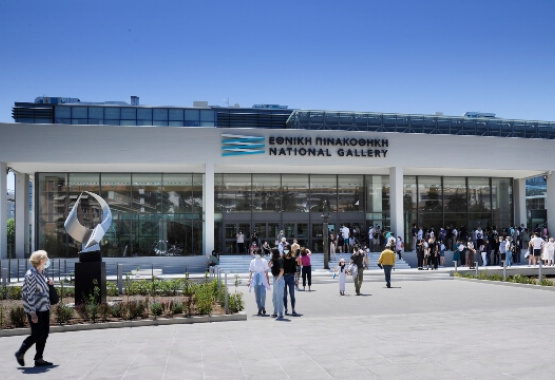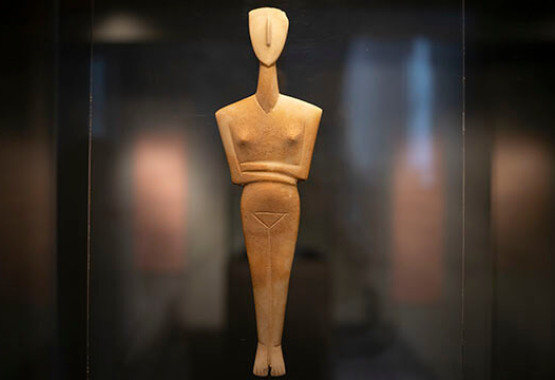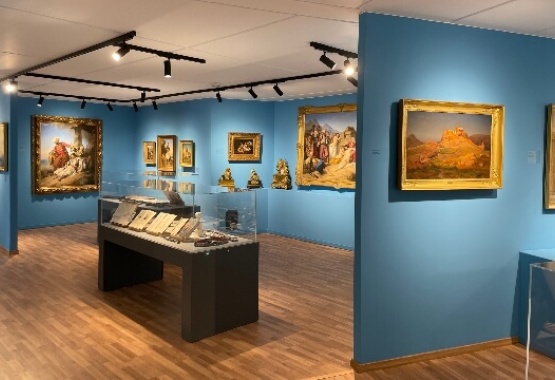
ATHENS
Stamatios Cleanthes (1802-1862), an architect and urban planner, purchased and renovated, along with his engineer associate, Edward Schaubert, one of the oldest buildings and one of the few surviving from the pre-Ottonian period in Plaka. Part of the house dates back to the times of the Franks, and one of the features is the impressive covered loggia, which allows visitors to gaze freely around the historic center. Cleanthes drew the first urban plan of the city of Athens in 1832, ordered by the first governor of Greece, Ioannis Kapodistrias, which, with the advent of King Otto (1833) was only partially implemented. Cleanthes then dealt with the design and construction of public and private buildings.
In the same venue, also known as the "Cleanthous House", the first university of the independent Greek State operated from 1837 to 1841. It remains in the minds of the people as the "Old University", and its robust presence, which dominates the foot of the Acropolis, is depicted in many paintings of old Athens.
In 1987, the year the first higher institution in the country celebrated its 150 years, it launched its present function as the Museum of History of the University of Athens. The primary objective of the museum is to collect, preserve and enhance the historical relics of the university. Its collections include rare books and manuscripts, scientific instruments of the 19th century, paintings, photographs, the unique banner of Nikolaos Gyzis, photographs and memorabilia from the history of the university. Also, browsing through the historic building and its collections, the contribution of the University of Athens in the development of scientific, cultural and political life of the country is highlighted, particularly in the 19th century, when the foundations were laid for the supply and production of scientific knowledge.
Various tour programs are offered depending on the age group and interests of visitors. Specially designed rooms of the museum host events and exhibitions. In summer, in the shadow of the Acropolis or under the moon and stars, the museum, on it’s cobbled vine-covered patios, delivers its best evenings with music, poetry, dance and theater.
Athens University History Museum
With the credentials of spiritStamatios Cleanthes (1802-1862), an architect and urban planner, purchased and renovated, along with his engineer associate, Edward Schaubert, one of the oldest buildings and one of the few surviving from the pre-Ottonian period in Plaka. Part of the house dates back to the times of the Franks, and one of the features is the impressive covered loggia, which allows visitors to gaze freely around the historic center. Cleanthes drew the first urban plan of the city of Athens in 1832, ordered by the first governor of Greece, Ioannis Kapodistrias, which, with the advent of King Otto (1833) was only partially implemented. Cleanthes then dealt with the design and construction of public and private buildings.
In the same venue, also known as the "Cleanthous House", the first university of the independent Greek State operated from 1837 to 1841. It remains in the minds of the people as the "Old University", and its robust presence, which dominates the foot of the Acropolis, is depicted in many paintings of old Athens.
In 1987, the year the first higher institution in the country celebrated its 150 years, it launched its present function as the Museum of History of the University of Athens. The primary objective of the museum is to collect, preserve and enhance the historical relics of the university. Its collections include rare books and manuscripts, scientific instruments of the 19th century, paintings, photographs, the unique banner of Nikolaos Gyzis, photographs and memorabilia from the history of the university. Also, browsing through the historic building and its collections, the contribution of the University of Athens in the development of scientific, cultural and political life of the country is highlighted, particularly in the 19th century, when the foundations were laid for the supply and production of scientific knowledge.
Various tour programs are offered depending on the age group and interests of visitors. Specially designed rooms of the museum host events and exhibitions. In summer, in the shadow of the Acropolis or under the moon and stars, the museum, on it’s cobbled vine-covered patios, delivers its best evenings with music, poetry, dance and theater.




